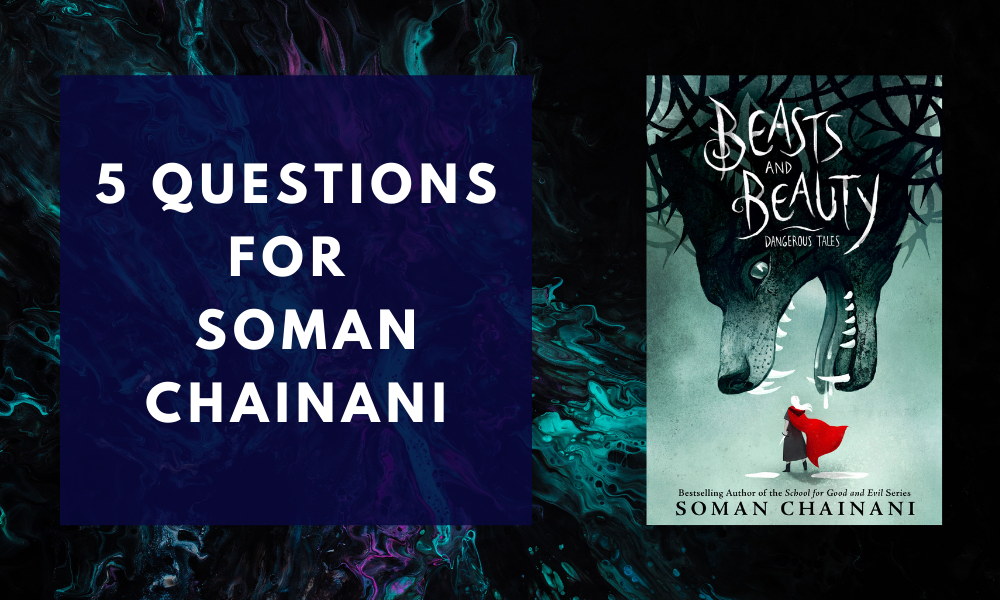
Soman Chainani’s debut series, THE SCHOOL FOR GOOD AND EVIL, has sold more than 3 million copies, been translated into 30 languages across 6 continents, and will be a major motion picture from Netflix in 2022.
Each of the six books in the series—THE SCHOOL FOR GOOD AND EVIL, A WORLD WITHOUT PRINCES, THE LAST EVER AFTER, QUESTS FOR GLORY, A CRYSTAL OF TIME, and ONE TRUE KING—have debuted on the New York Times Bestseller list. Together the books have been on the print and extended lists for 38 weeks.
A graduate of Harvard University and Columbia University’s MFA Film Program, Soman began his career as a screenwriter and director, with his films playing at over 150 film festivals around the world. He has been nominated for the Waterstone Prize for Children’s Literature, been named to the Out100, and also received the $100,000 Shasha Grant and the Sun Valley Writer’s Fellowship, both for debut writers.
Soman lives in New York City.
.
Voyage: What was the inspiration behind your novel, Beasts and Beauty? What made you want to tell this story?
Soman Chainani: One of the goals with Beasts and Beauty was to write that holy grail: a book for both young readers and adults. The Grimms’ fairy tales had that quality—they worked for every age, because there was the story on the surface for children and the thrilling, sinister subtext for the elders. So when writing these new fairy tales, I didn’t pull any punches. They’re dark, intense, and relentlessly honest, as if I’m telling these stories around a campfire to an audience of any age. Each story is set in the 18th and 19th centuries, but has its pulse on the timeless and universal. Beauty and the Beast is about how being an immigrant in a new land means you often can’t be seen for who you truly are. Bluebeard is about a rich, mysterious man who preys on boys from orphanages, only to meet his match. Peter Pan is the story of Wendy growing up, only to realize she prefers a pirate to Pan. Everyone can see themselves in these stories. And already it seems that publishers are recognizing they work for every age—in the US, it’s being published for ages ten and up, while in the UK, it’s being published as an adult literary novel. That disparity is the highest compliment I can imagine.
.
V: When you write your stories, what is the one thing you hope readers will take away?
SC: Fiction is always ahead of reality. I remember when M.T. Anderson’s Feed came out, twenty years ago, predicting exactly the dopamine-obsessed, neurally-plugged-in culture that we’re in now. Our job as authors is to live our lives in a constant state of thought experimentation. What if? That’s the question that guides us. In Beasts and Beauty, every story is a mini-thought experiment. What if Snow White was the only Black girl in her kingdom—and named ironically by her mother? What if Sleeping Beauty was a prince, who’d repressed his desire to marry another prince? What if the Little Mermaid was the true witch of the story? Storytelling is about asking questions that have no answer at first and then imagining the pathways into different futures, alternative futures, before we’re asked to live them in real life.
.
V: What was the hardest scene (or in your case, story) in Beasts and Beauty to write?
SC: Bluebeard for sure. It has such a layer of darkness underneath and taps into my deepest fears and for weeks I could hardly sleep while writing it. It really felt like I was digging into the underside of my soul. I also had no idea where it was going. It wrote itself, including the strange little detours about a fox, which had special meaning because a fox really is my animal spirit.
.
V: If you could tell your younger writer self anything, what would it be?
SC: Find the stories only you can tell. If someone else can write it…it’s not your story to tell. It has to be so specific to your life and your experience. Then you’ll write something special.
.
V: What are your writing must-haves?
SC: Silence, earplugs, my polarizing glasses which neutralize computer glare…and a lot of light. It’s difficult for me to write in dark or dim rooms.
.
Head to our Instagram page (@voyageya) to hear Soman read the first page of Beasts and Beauty! Find Soman’s video under the IGTV tab.
